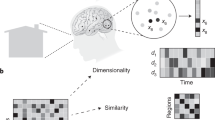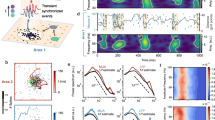Abstract
Fast synaptic transmission by excitatory neurotransmitters endows neural tissue with remarkable computational power but is limited in its ability to adapt with experience. Information in the nervous system can also be distributed beyond the synapse by biogenic amines or neuropeptides released at non-synaptic sites to elicit volume transmission and by the spatial second messenger nitric oxide which can diffuse from a synapse to a volume of surrounding neural tissue. Volume transmission and spatial signaling complement classic point-to-point transmission and may coordinate local activity among groups of neurons and glia. An interesting dialogue exists between these systems. Nitric oxide produced in response to excitation of a neuron by glutamate stimulates exocytosis and release of glutamate and dopamine from nearby neurons. Dopamine in turn can alter the strength of glutamatergic synapses and affect synaptic plasticity.
This is a preview of subscription content, access via your institution
Access options
Subscribe to this journal
Receive 12 print issues and online access
$259.00 per year
only $21.58 per issue
Buy this article
- Purchase on Springer Link
- Instant access to full article PDF
Prices may be subject to local taxes which are calculated during checkout
Similar content being viewed by others
Author information
Authors and Affiliations
Rights and permissions
About this article
Cite this article
Schulman, H. Nitric oxide: a spatial second messenger. Mol Psychiatry 2, 296–299 (1997). https://doi.org/10.1038/sj.mp.4000197
Accepted:
Issue Date:
DOI: https://doi.org/10.1038/sj.mp.4000197
Keywords
This article is cited by
-
Current concepts in the pathophysiology of fibromyalgia: the potential role of oxidative stress and nitric oxide
Rheumatology International (2006)



